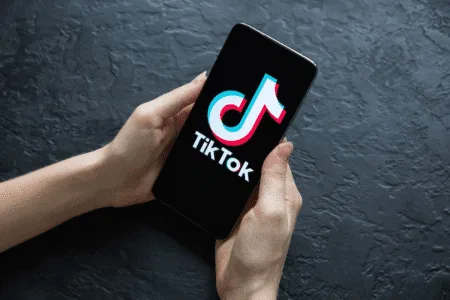
Short video from Tik Tok
The rise of “Tik Tok” ignites the technology race towards controlling the short video clips market
Since its appearance on the global scene in 2016, the “Tik Tok” application, owned by the Chinese company “ByteDance”, has been able to…
To bring about a real revolution in the world of social networking sites, and impose itself as the most powerful platform for short video clips.
With the number of its monthly active users exceeding 1.12 billion users around the world, competition has intensified in this promising market, and the largest global technology companies are racing to catch up with it.
But so far, no one has succeeded in matching it.
TikTok short video dominance in the digital landscape
According to Backlinko, American users spend about 108 minutes a day on TikTok, making it one of the most time-consuming apps ever.
These amazing numbers,
CNBC reported on Apptopia platform data, revealing the extent of addiction caused by the platform thanks to its unique algorithms that recommend content in a highly intelligent way.
Tik Tok is no longer just an entertainment application, but has become a digital center for young people looking for news.
New trends, and even online shopping. Jasmine Enberg, Vice President and Principal Analyst at eMarketer, says:
“Tik Tok is the hub of the internet for young people. It is the number one destination for entertainment, news, fashion, and everything that is trending.”
Attempts to compete from technology giants
The resounding success of TikTok prompted technology giants such as Meta and Google to radically change their strategies.
Meta launched the “Reels” platform through the Instagram application, while Google launched “Shorts” through YouTube.
Both platforms have achieved tremendous growth in a short period, and have made continuous improvements by adding new features and innovative tools to support and motivate creators.
LinkedIn, a subsidiary of Microsoft, also joined this race by launching a short video feed similar to the style of TikTok, although it is traditionally known as a professional platform more than an entertainment one.
However, despite these huge efforts, experts still agree that none of these platforms have yet been able to reach the level of accuracy of TikTok’s algorithms or reproduce its unique experience for users.
Tik Tok’s continuous development
What distinguishes TikTok is that it is not satisfied with its current success, but rather continues to innovate and expand.
Recently, the app has expanded its horizons by adding long-form videos and integrating e-commerce features, gradually transforming it from an entertainment app into a multi-functional platform.
This development raises an important question: Will TikTok’s competitors be able to keep up with this rapid growth? Will their continued attempts to break his dominance succeed?
The dark side of ubiquity
Despite its tremendous success, the rise of TikTok is not without some challenges and concerns.
Several researchers, including Dr. Jan Ponsen of the Yale Child Study Center, link
Between the excessive use of short video clips and the emergence of psychological and behavioral problems among users, especially young people.
The endless scrolling that underpins TikTok is designed to hold a user’s attention for a few short moments, leading to shortened attention spans, increased levels of anxiety, and disrupted sleep, warns Ponsen.
And he says:
“In the past, entertainment was a journey that took you through a complete story, but now,
“It is an instantaneous captivation, based on moving from one scene to another quickly enough to keep you glued to the screen.”
Challenges of monetizing short videos from TikTok
Despite the huge popularity of short videos, monetizing them remains a complex task compared to long-form video content.
On YouTube, for example, multiple ads can be inserted within a long video.
Which increases profit opportunities, while short videos lack these advertising spaces.
Although TikTok generated an estimated $23.6 billion in ad revenue in 2024 according to Oberlo, many content creators only receive very small sums for millions of views.
“Shorts” from YouTube, for example, pays only about four cents per thousand views.
This is a very modest amount compared to the profits of long-form videos.
Platforms like Instagram are trying to adapt to this reality by supporting brand partnerships
And offering tools like “Trial Reels,” which allow creators to test content with a limited audience before publishing it widely.
However, Meta acknowledged that the process of developing Rails’ monetization systems is still being refined,
Which leaves ample room for innovation in this field.
Fierce competition and new opportunities
As political scrutiny mounts in the United States over TikTok’s Chinese ownership, golden opportunities loom for its rivals.
If bans or restrictions are imposed on TikTok, Meta and YouTube may be able to capture up to 50% of the ad spending that would be reallocated, according to eMarketer estimates.
At the same time, TikTok is moving to strengthen its presence by entering new fields such as e-commerce,
And online education, and broadcasting long-form live videos, which strengthens its position as an integrated platform.

















